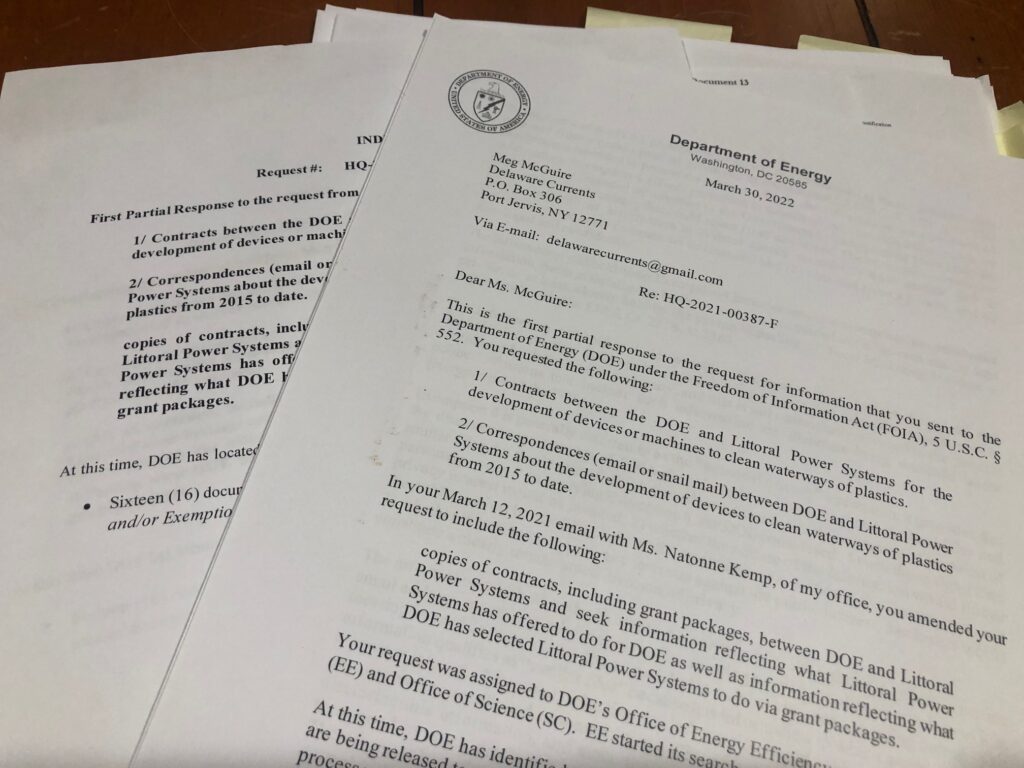
Accurate Reporting Takes Time and Persistence
| September 30, 2022
Editor’s note: This is a free newsletter that was sent to subscribers. To sign up for the newsletters, email us.
Dear reader,
We’re going to be sending out a newsletter once a week, with any luck, and we’re planning it for Thursdays.
Today, I’ve asked my stalwart freelancer (and husband) to give you a little behind-the- scenes look at two stories we published recently.
I’m happy to have Chris working on stories for Delaware Currents. You should know that he’s an experienced investigative reporter who’s inclined to ask for verification in the tradition of the old journalism adage: “If your mother says she loves you, check it out!”
Here’s Chris:
As an editor and a reporter, I have been known to repeatedly make the mistake of thinking that some stories are simple – you know, like pressing the red “EASY” button that Staples advertises.
Such was the case with two separate but connected stories that Delaware Currents published this week.
One was about Riverine Technology’s plans to test a prototype of its Smart Trash Boom in the Delaware River next year.
The other was about a study supported by The Ocean Cleanup that identified the Delaware as the No. 1 source in all of North America of plastics pollution leading to oceans.
The path to reporting on them and getting them published was about as straight as a corkscrew.
First, though, some backstory:
In February 2021, the founder/publisher/editor of Delaware Currents, my wife, Meg McGuire, heard about an outfit that was building a device to help clean the river of plastics pollution.
The company, Littoral Power Systems, was getting funding from the U.S. Department of Energy to pilot test the device.
That was intriguing enough, but in a twist, the company, we heard, was citing a study funded by Ocean Cleanup that identified the top 1,000 river inputs worldwide that are conduits for 80 percent of the plastic pollution leading to oceans.
The biggest offender in all of North America was the Delaware, according to the study. But there were questions about the underpinnings of the study, which relied on a mathematical model, not on real-world data.
To sort out the connection of the study with Littoral Power Systems, I wanted to hear what Littoral had to say. I figured this would be easy: I’d call the company, find out what it’s up to, and check with the U.S. Department of Energy to learn more about the funding.
Let’s just say the “EASY” button was broken.
All I got was radio silence from the company. The lack of responsiveness aroused my curiosity even more.
Delaware Currents ultimately filed a public records request (aka a Freedom of Information Request) with the Department of Energy for contracts and correspondences about the project.
By the way, if you wondered why the Department of Energy has a role in the cleanup of plastics pollution on the Delaware, I discovered it has an Office of Energy Efficiency and Renewable Energy and within that, a Water Power Technologies Office.
You learn something new all the time.
And time – a little over 13 months — is what it took before we got documents from the federal agency.
As a reporter, when public records arrive, I’m as excited as a kid on Christmas morning, eager to unwrap the package to see what’s inside.
Email exchanges among officials from Littoral Power Systems, the Department of Energy and other parties were in the records. Those emails, in turn, allowed me to find a technology manager at the Water Power Technologies Office. When I contacted him, that led me to Riverine Technologies.
In an interview and a series of emails over the summer, I got a clearer sense of the plastics pollution pilot project, which is now being led exclusively by Riverine and, in another twist, no longer features Littoral Power Systems at all.
Also in the records: details about Littoral’s proposal and citations to the Ocean Cleanup-funded report. That led me to interview an official at Ocean Cleanupwho very helpfully explained more about the study’s conclusions and its limitations.
All of that waiting and following the serpentine path ultimately led to the stories Delaware Currents published this week.
Like I said – easy!






